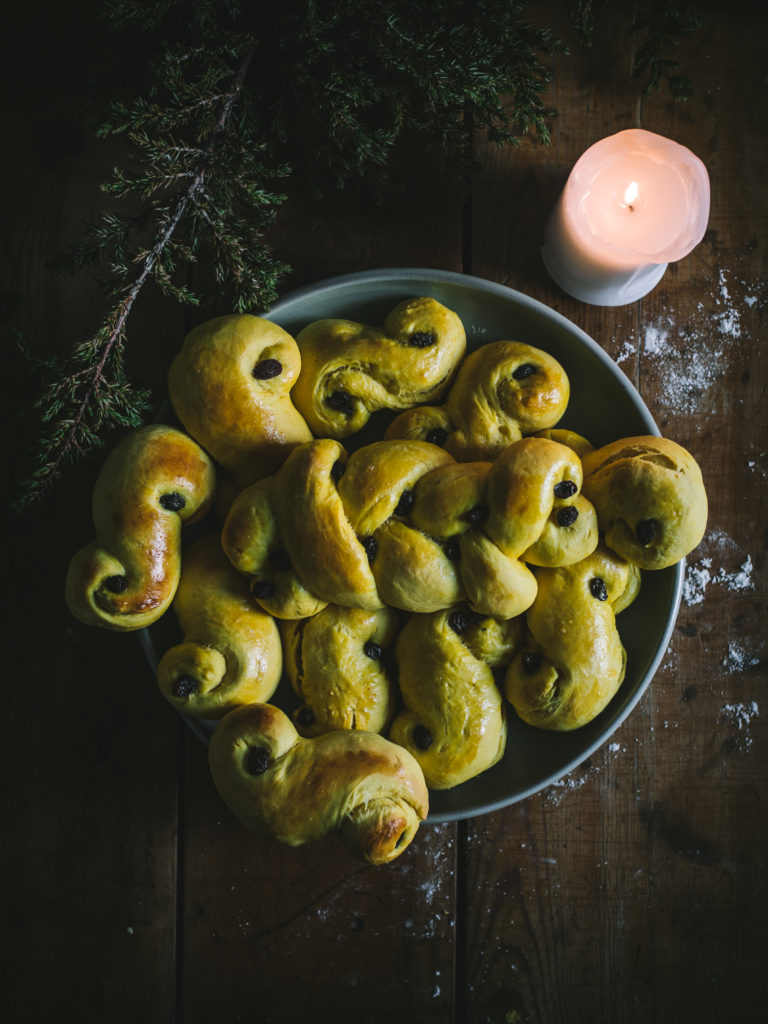
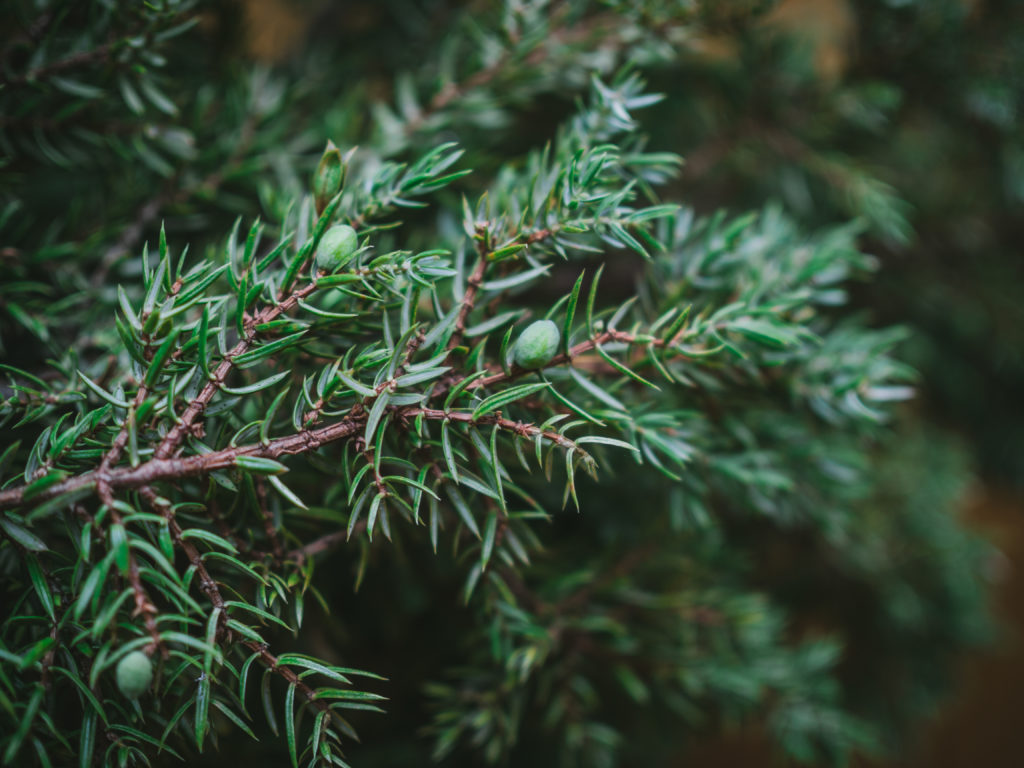
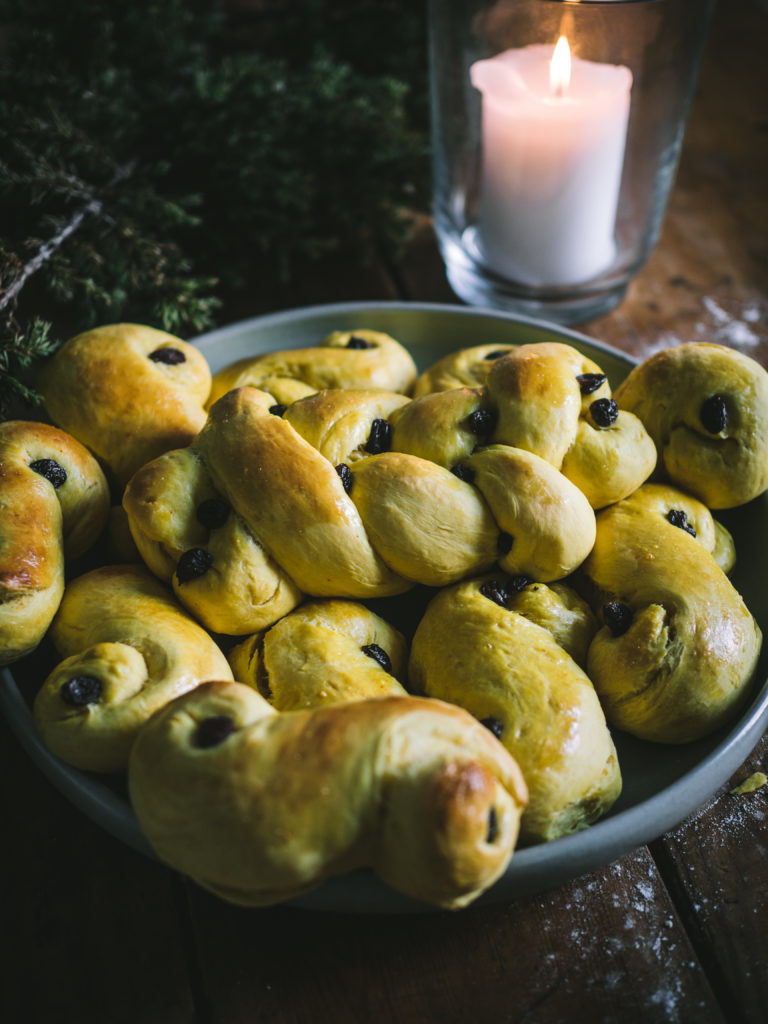
St. Lucia Day, luciadagen, falls on 13 December and is celebrated throughout Scandinavia. In Norway, the day is celebrated with a candle procession in the kindergartens and schools, which is led by one of the children dressed up as Lucia in a white dress with a wreath and candle on their head. The other children follow behind, dressed also in white robes and singing the song, “Santa Lucia”.
As the procession carries forward, the children hand out saffron buns to symbolize the light of Christianity throughout the darkness of the world. These saffron buns are a Swedish custom that have become a permanent baked-good tradition during the holiday season and lead up to Christmas.
There are many thoughts to the origins of this celebration. It is believed that St. Lucia is based off of the 3rd century martyr, as well as the Nordic Lussi, and possibly a white-clad angel and light-gatherer in the Middle Ages, and the German Christkindchen (Christkind) – a white-clad girl with a paper crown and burning wax candles on her head. In some parts of Germany, she went around and distributed Christmas presents to the children, either alone or with St. Nicholas. According to the legend of St Lucia the martyr, she brought food to Christians hiding in the catacombs using a candle-lit wreath atop her head to light the way and allow her to carry as much food as possible. Saint “Lucy’s” Day, once coinciding with the winter solstice, has become a Christian festival of light and is regarded as an event signalling the arrival of Christmas. It is said that to vividly celebrate St. Lucia Day will help one navigate the long winter days with enough light.

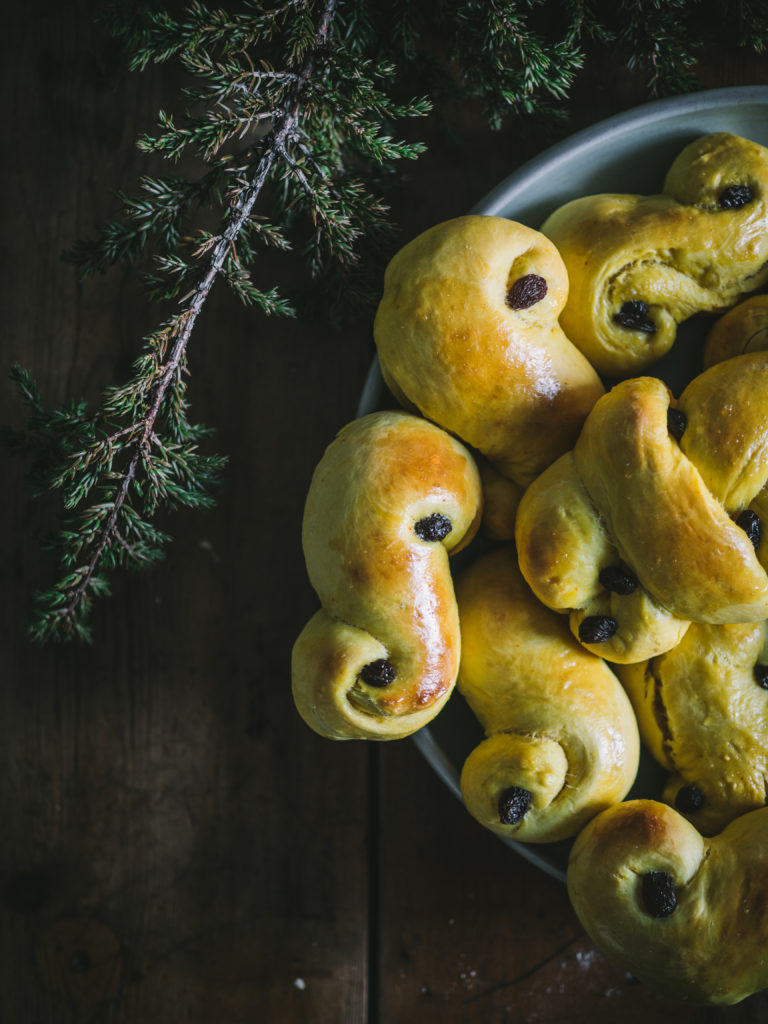

In older times, it was tradition to give a little something extra good – a “lussebit” – to the livestock to protect them against any evil powers outside during the night of the celebration, the lussinatt. This night was associated with much superstition and referred to as the long night as it was thought to be the winter solstice. According to ancient belief, all kinds of evil forces were loose as light and darkness fought for power. The Lussi, a a mythical woman/troll with evil traits who would be out that night, was a story told to scare off children and keep them indoors.
Eventually, people introduced eating an extra special breakfast on St. Lucia Day. In the 19th century in western Sweden, young women on the large farms would dress as an angel with a wreath of candles in their hair and serve the breakfast before sunrise. It is thought this is where the origin of lussekatter, the saffron buns, came to be. However, another theory is that the older Swedish name of the buns, döfvelskatt or “devil’s cat” (which may explain the Norwegian name of lussekatter), is linked to a 17th century practice in Germany. There it was believed that the devil, in the form of a cat, would give the bad children a beating, while a Christ figure, in the form of a child, would hand out sweet buns to all the kind ones. To keep the devil away, the sweet buns were colored with luminous yellow saffron spice.
Another thought behind the addition of saffron is to symbolize the sun and the light. They are shaped in various forms, but the traditional spiral “S” shape is an ancient symbol for the sun and life. It’s tradition today to also adorn each one with a raisin or two.
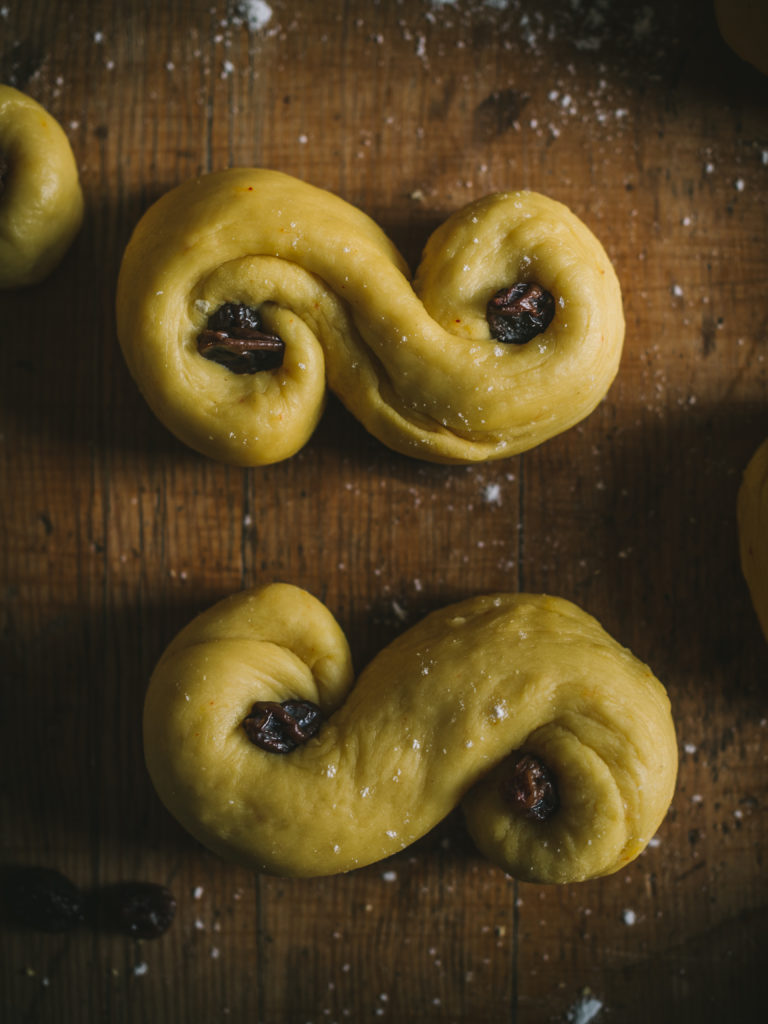
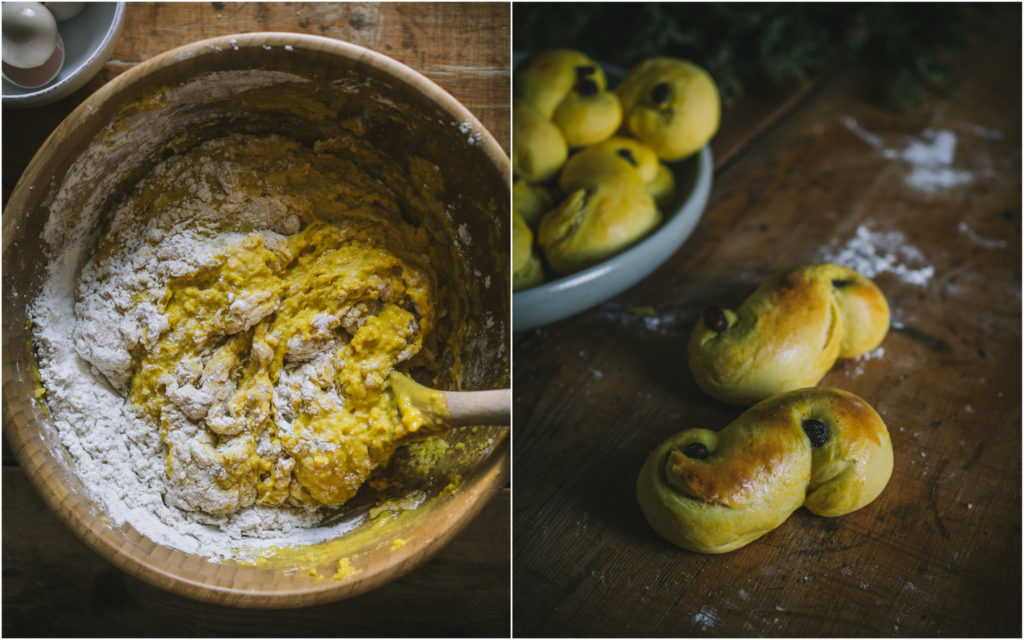
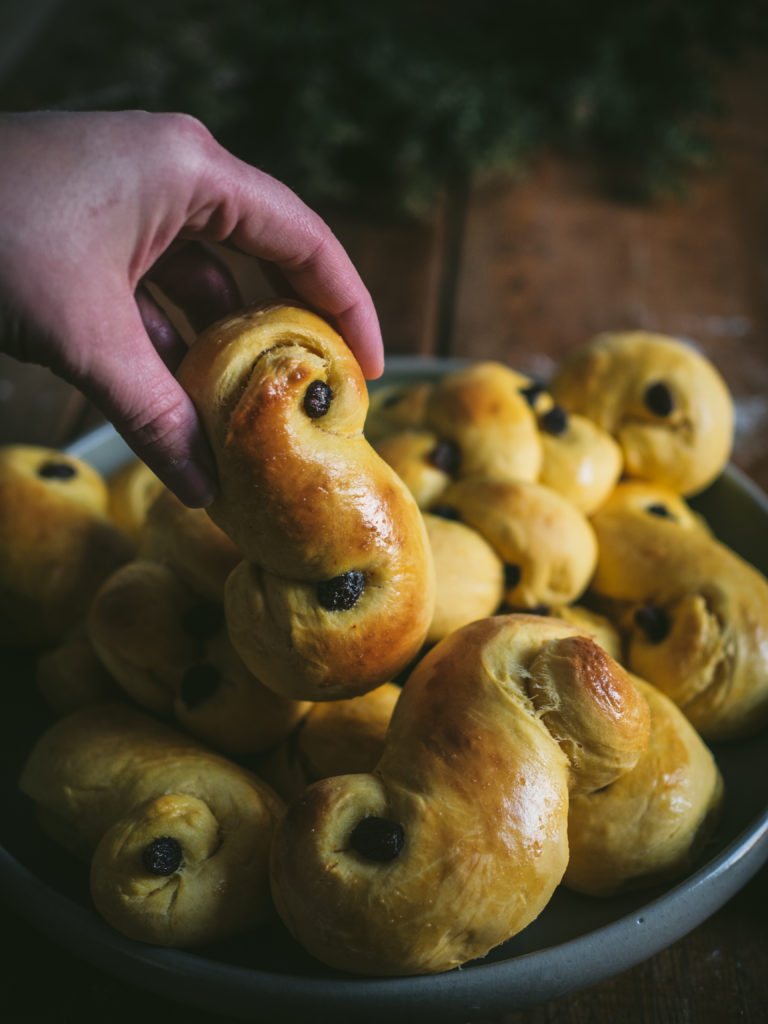
Whatever the roots of St Lucia are and might be, today it remains a steadfast celebration of finding light in the darkness and sharing that light with warm, soft saffron buns.
St. Lucia Saffron Buns (Lussekatter)
Makes about 14 buns
- 2/3 cup (150 g) butter
- 2 cups plus 1 tablespoon plus 1 teaspoon (5 dl) milk
- 2 ounces (50 g) fresh yeast or 2/3 ounces (17 g) active dry yeast
- ¼ teaspoon (0.5 g) ground saffron or saffron threads, gently crushed
- ¾ cup (150 g) granulated sugar
- 1 teaspoon salt
- 2 large eggs
- 7 ½ cups (900 g) all-purpose flour, plus more if needed
- Raisins, for decoration
- Egg, for egg wash
In a medium saucepan over medium heat, melt the butter. Whisk in the milk, yeast and saffron and remove from the heat. Add in the sugar and combine. Whisk in the 2 eggs and pour the mixture into a large bowl. Add in the flour and salt, and mix to form a sticky dough. Turn it out onto a lightly floured surface and knead until smooth and elastic, about 5-10 minutes. Cover with a tea towel and let it rest for 45 minutes, or until doubled in size.
Divide the dough into 14 or so equal portions. Working with one piece of dough at a time, roll out into a strand, roll up one end into the middle, and roll the other end into the opposite side, forming an S-shape (see photos for inspiration). You can also shape them as desired. Place the buns on two large parchment-lined baking trays. Let the buns rest, covered with a tea towel, for another 15-20 minutes, until doubled.
Preheat the oven to 400°F / 200°C. Decorate the buns with raisins. In a small bowl, whisk the egg for the egg wash and, using a soft-bristled brush, lightly brush the egg on top of the dough.
Bake the buns, one tray at a time, for 10-12 minutes, until golden.
You’ll want to eat these buns on the day while they are still fresh or possibly the day after. Use any leftovers that have gone stale to make a bread pudding.
Head here for more Christmas inspiration.
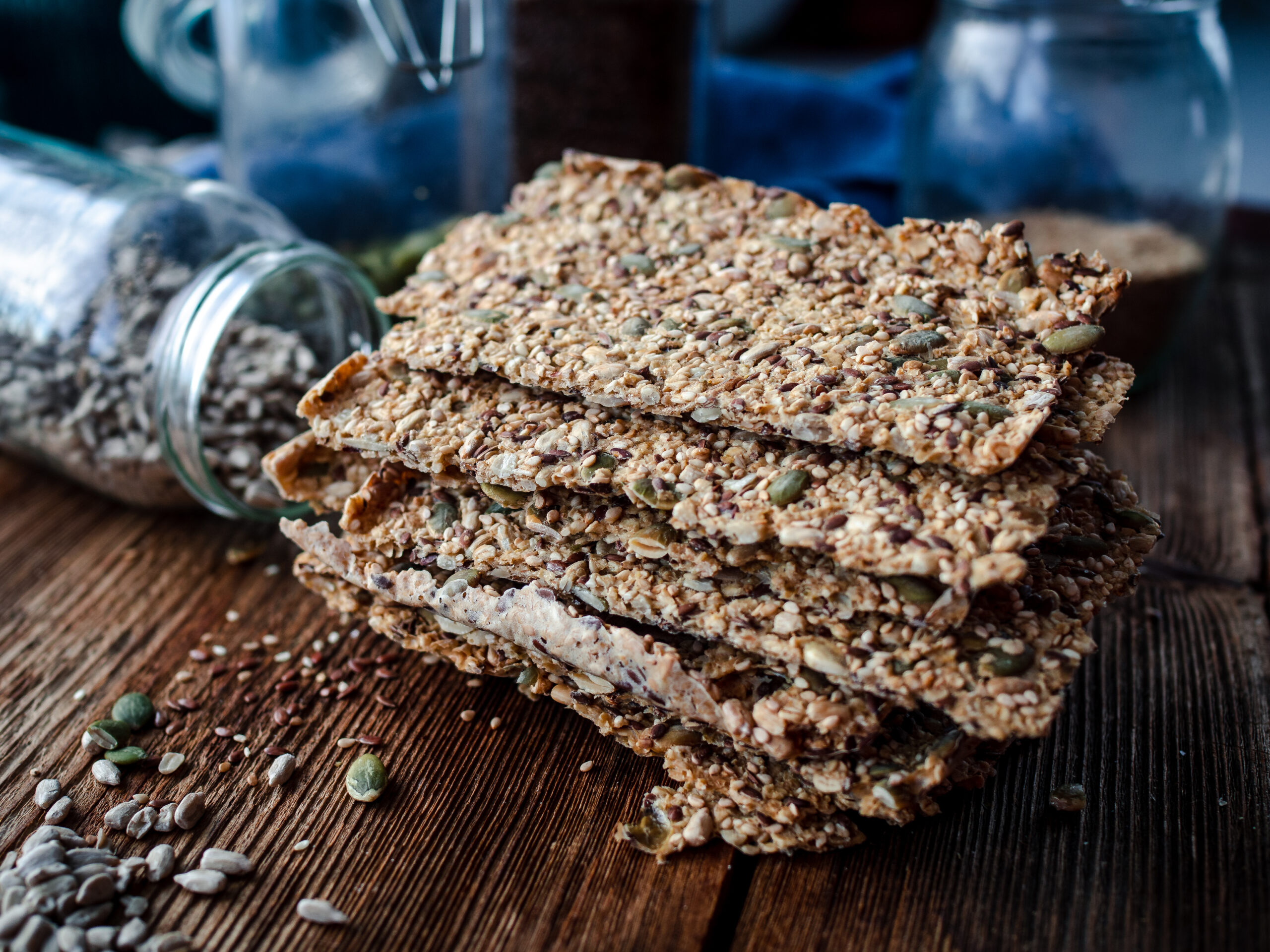
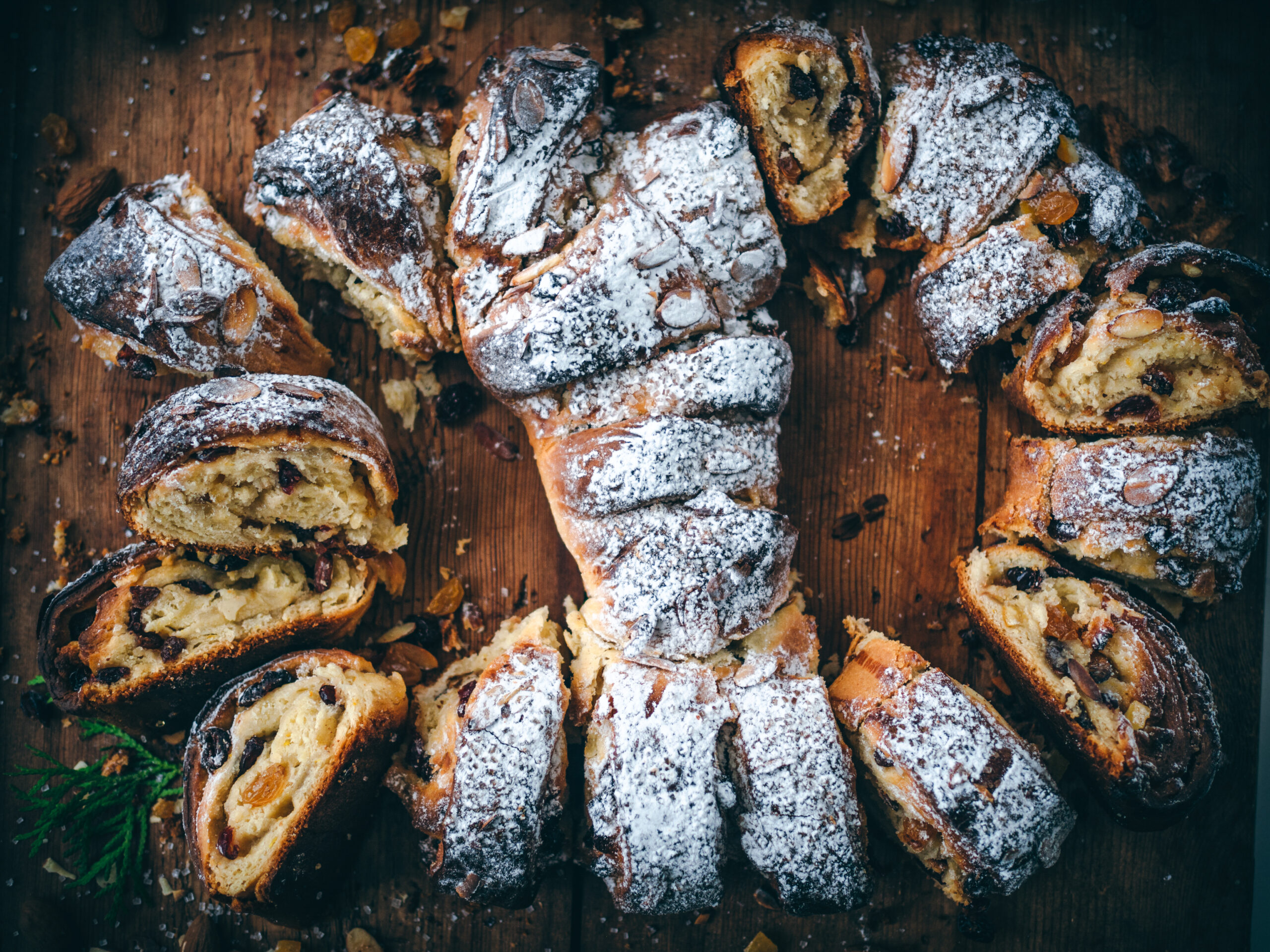
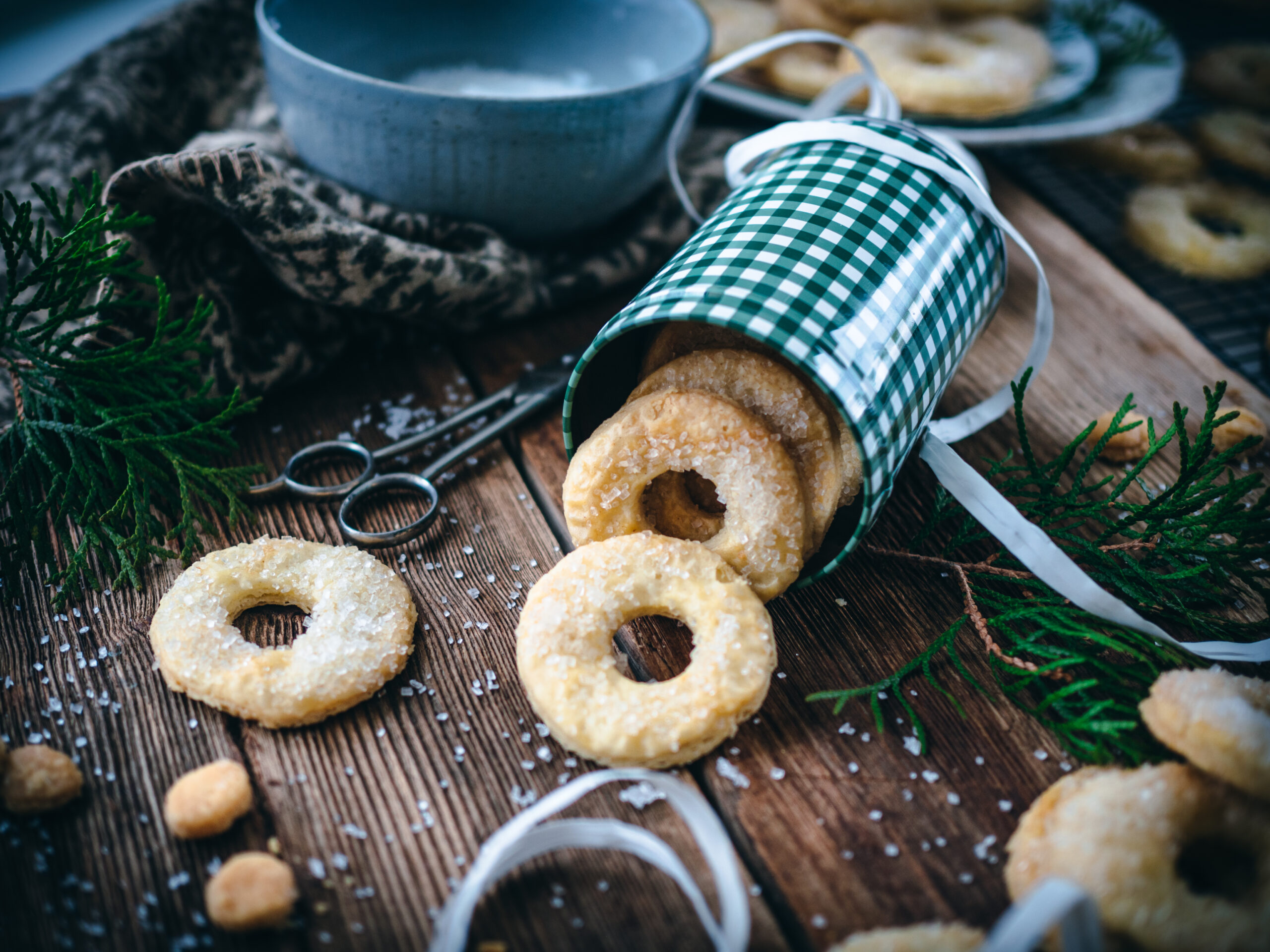
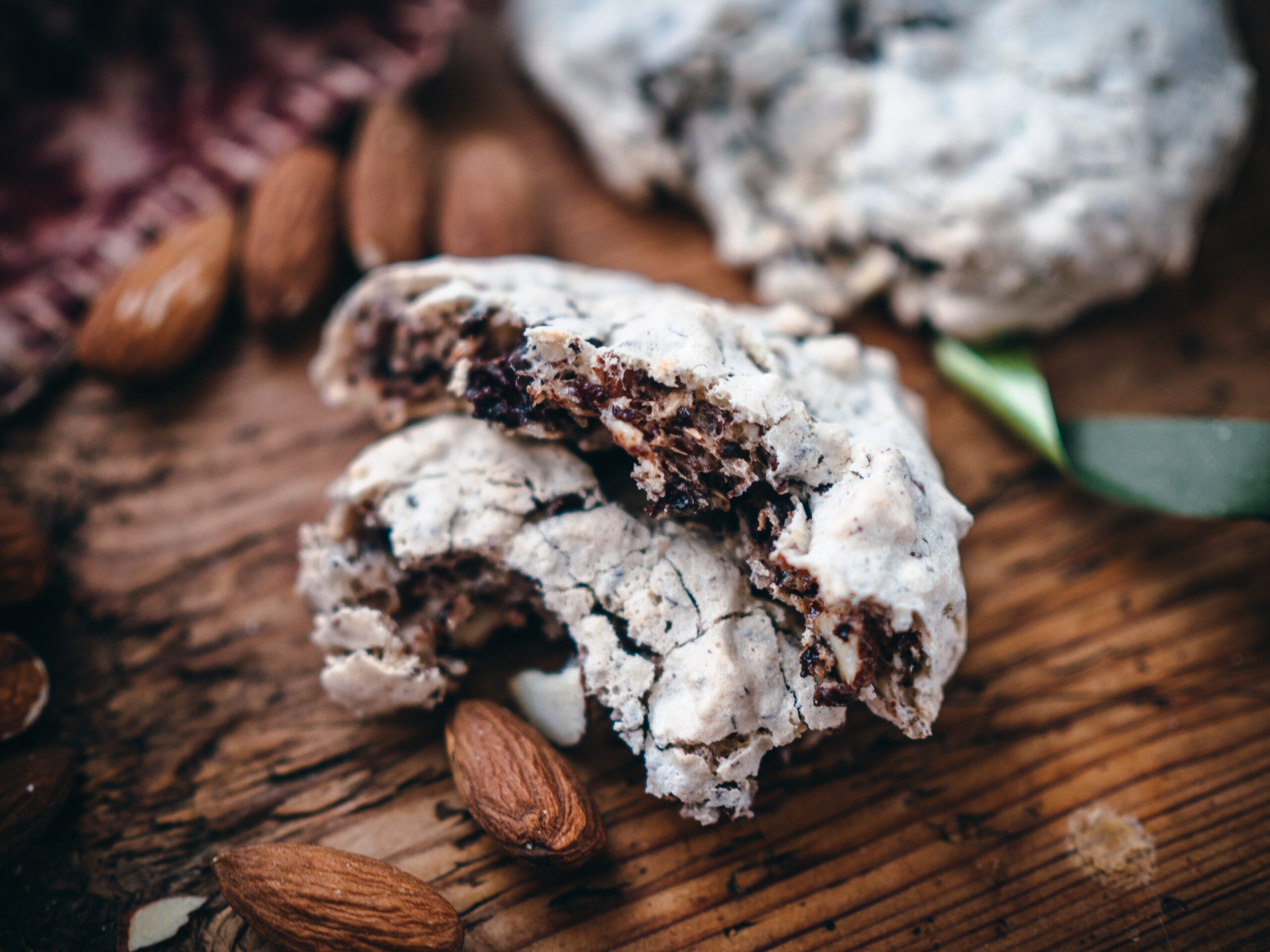

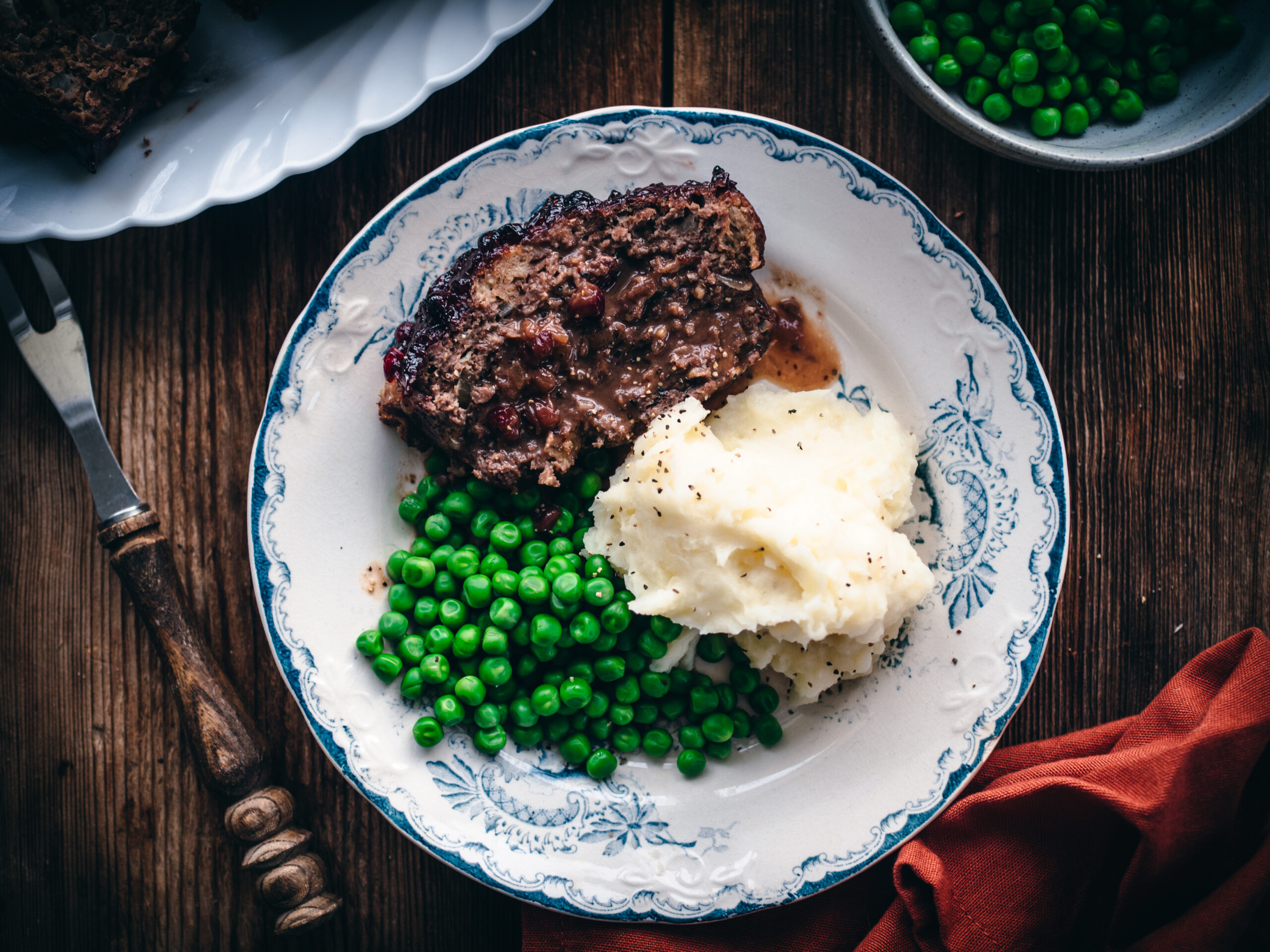
Is it possible to make the dough the night before and then refrigerate it at some point before baking the next morning? I’d like to try that instead of getting up at 3 am to make them for breakfast!
Hi, yes by all means you refrigerate the dough. You’ll want to give yourself plenty of time in the morning to let the dough come to room temperature and rise a second time.
My hubby’s family has quite a bit of Norwegian (mine has the Swedish). Anyway, they like to make Saffron Buns with currants. It’s interesting to learn some of the history behind them (or at least what they think it is). Thank you!
Thank you for the recipe and background on this treat! The buns turned out great, and for fun we did half with raisins and the others with cranraisins.
I would recommend two minor edits:
1. Let the saffron sit in the butter-milk-yeast mix for a few minutes.
2. Rotate the tray in the oven half-way through baking to help get all-over color.
I just made these today for Santa Lucia day. They turned out great, moist and fluffy. I might add a little more sugar next time, and maybe some cardamom:) I’ve made your ‘skole boller’ recipe a few times, they were delicious. I’m born and raised in Norway, but live in Colorado, and really love and appreciate all your beautiful recipes. Thank you!
Thanks, Trine! So happy you’ve enjoyed the recipes!